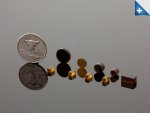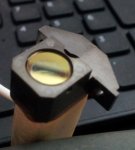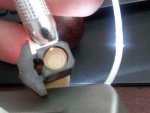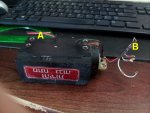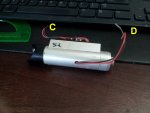- Joined
- Aug 14, 2013
- Messages
- 2,640
- Points
- 63
Found a lens

Follow along with the video below to see how to install our site as a web app on your home screen.
Note: This feature may not be available in some browsers.



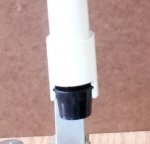
Ulao -- (John) ---
I got the carbon bar stock.
PM me your address and I'll send you a chunk!
HMike
Hey John --- This is my first Pulse sensor I machined from carbon. The dust isn't too bad....
It is 0.924" OD, 0.2275" thick and has a 0.070" thick x0.70" Dia target area. I can thin that down if you
think it would work better.

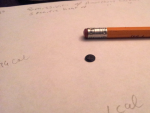 So the smaller you keep the sensor the more sensitive it becomes. My problem was that when I operated over 750 volts the carbon began to ablate. By making the diameter larger that could be avoided but I wouldn't want to increase it more than say 20 or at most 30 percent. Remember that mass would increase as the square of diameter.
So the smaller you keep the sensor the more sensitive it becomes. My problem was that when I operated over 750 volts the carbon began to ablate. By making the diameter larger that could be avoided but I wouldn't want to increase it more than say 20 or at most 30 percent. Remember that mass would increase as the square of diameter.Found a lens
 and
and 